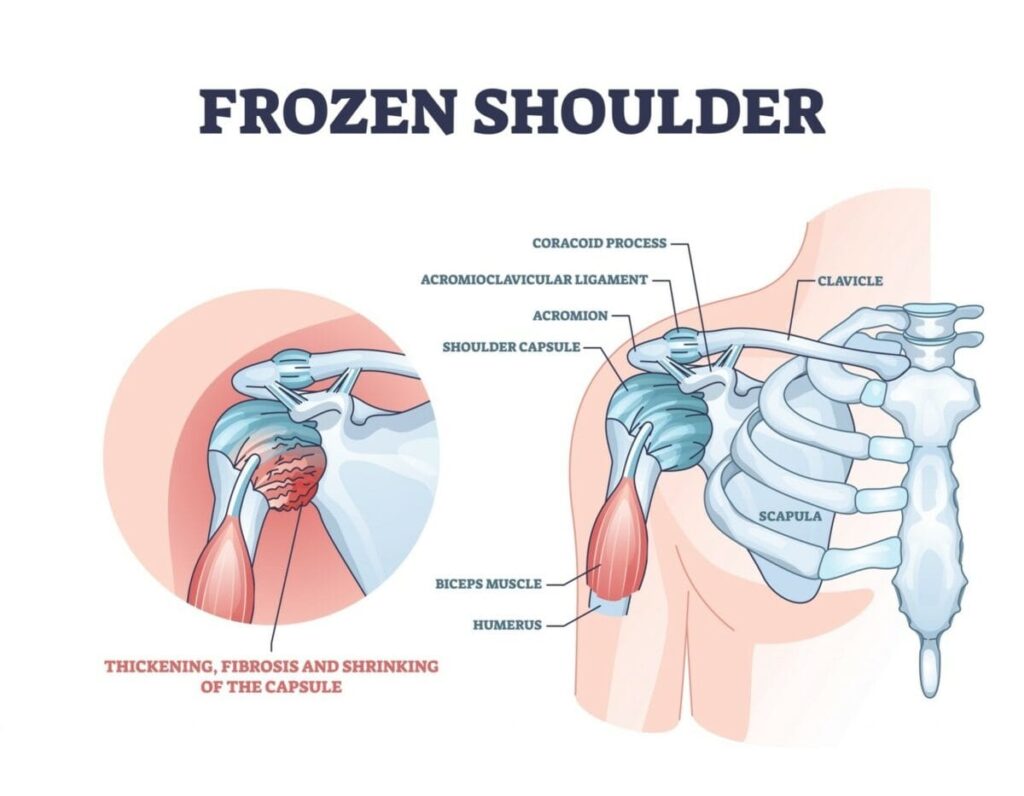Frozen Shoulder
Frozen shoulder, also known as adhesive capsulitis, is a condition that causes pain, stiffness, and limited range of motion in the shoulder joint. It can develop gradually and worsen over time before eventually improving — but this process can take months to years.
Understanding the Condition
• Cause: The connective tissue surrounding the shoulder joint (the capsule) becomes thickened and tight, restricting movement.
• Phases:
1. Freezing stage (Painful phase): Shoulder becomes painful and movement becomes limited (can last 6 weeks to 5months).
2. Frozen stage (Stiffness phase): Pain may reduce, but stiffness remains (4 to 6 months).
3. Thawing stage: Shoulder motion gradually improves (6 months to 1 year).
Symptoms
• Dull or aching pain in the outer shoulder or upper arm.
• Severe stiffness.
• Difficulty with everyday activities (e.g., combing hair, reaching overhead).
• Worsening symptoms at night.
Risk Factors
• Age (40–60 years)
• Female
• Diabetes (significantly increases risk)
• Thyroid disease
• Immobilization after injury or surgery
• Parkinson’s disease, cardiovascular disease
Diagnosis
Typically based on:
• Physical exam
• Range-of-motion tests
• Imaging (e.g., X-ray or MRI) to rule out other conditions
Treatment
Most cases resolve with non-surgical treatment, including:
- Medications
• NSAIDs (e.g., ibuprofen) for pain and inflammation
• Steroid injections for more severe cases - Physical Therapy
• Gentle stretching and range-of-motion exercises
• Strengthening exercises in later phases - Other Interventions
• Heat and cold packs
• Hydrodilatation (injection of saline + steroid to stretch the capsule)
• Manipulation under anesthesia (MUA) – rarely, for severe cases
Recovery Outlook
• Most people recover fully, but it can take 1 to 2 years.
• Early diagnosis and treatment can reduce the duration and severity.

